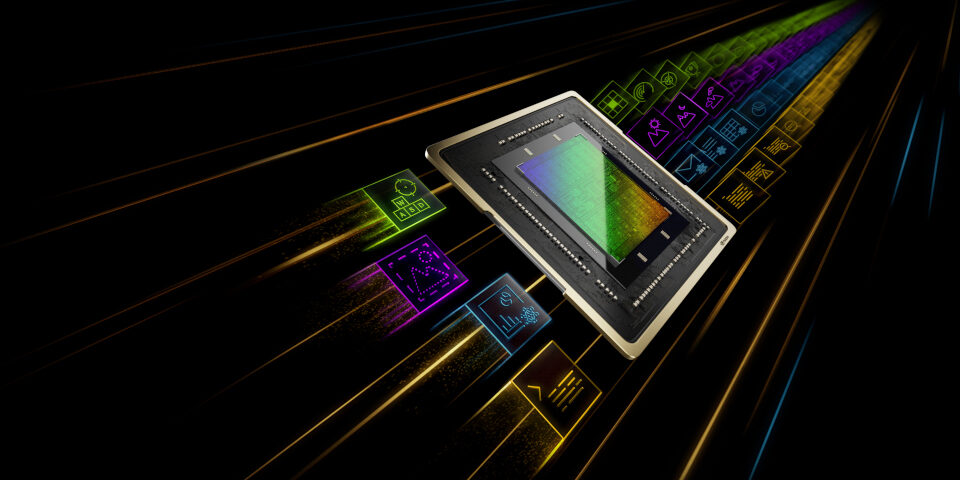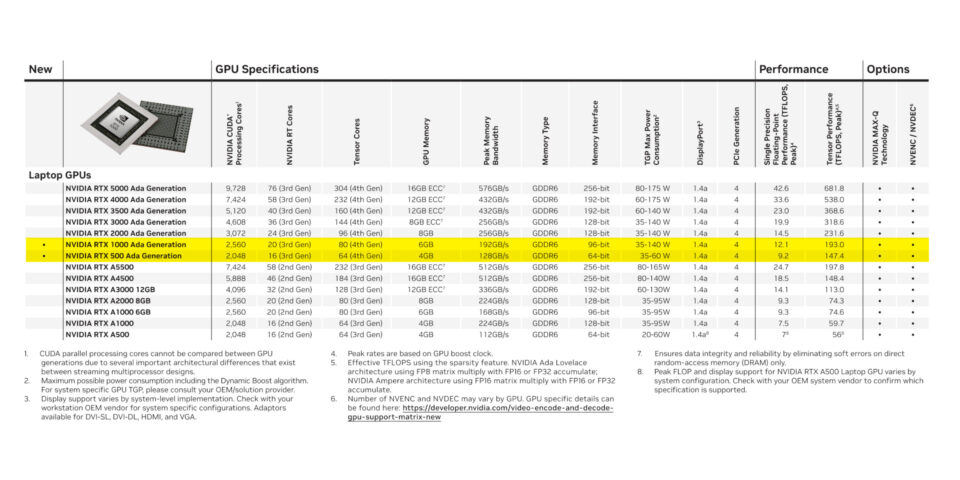NVIDIA unveils new RTX 500 and RTX 1000 pro laptop GPUs

Nvidia has announced the RTX 500 and RTX 1000 Ada Generation laptop GPUs, its latest cards for professional design and content creation work based on the Ada Lovelace GPU architecture.
The 4GB and 6GB cards, due to become available in mobile workstations from partner firms later this spring, round out the bottom end of NVIDIA’s current line of professional laptop GPUs.
The latest workstation GPUs based on NVIDIA’s Ada Lovelace architecture
The RTX 500 and 1000 are the latest GPUs to use NVIDIA’s Ada Lovelace architecture, which features improvements to all three of its key GPU core types: CUDA cores for general GPU computing, Tensor cores for AI operations, and RT cores for hardware-accelerated ray tracing.
It also supports DLSS 3, NVIDIA’s AI render upscaling and frame interpolation tech, used to improve viewport interactivity in GPU renderers like D5 Render and Chaos Vantage.
Core specifications for NVIDIA’s Ada Generation laptop GPUs. Click the image to view it full-size.
Core specifications
The new cards fill out the bottom end of NVIDIA’s Ada Generation line-up of pro laptop GPUs, begun last year with the RTX 2000, RTX 3000, RTX 3500, RTX 4000 and RTX 5000.
For general content creation work, their core counts and compute performance approach those of the existing RTX 2000, although they’re significantly lower than those of the other cards.
When it comes to GPU rendering, their graphics memory capacity is quite limited: 6GB for the RTX 1000, and just 4GB for the RTX 500.
However, at 35-60 W, the power consumption of the RTX 500 is the lowest of any professional Ada Generation GPU, albeit still higher than the previous-generation Ampere cards. The figures for the RTX 1000 are identical to the existing RTX 2000 and RTX 3000.
Performance benchmarks
NVIDIA hasn’t released any specific benchmark scores for CG applications for the new cards.
Its blog post announcing the new GPUs includes some more general performance comparisons, noting that the RTX 500 provides “up to 14x the generative AI performance for models like Stable Diffusion, up to 3x faster photo editing with AI and up to 10x the graphics performance for 3D rendering compared with a CPU-only configuration”.
Release dates
The RTX 500 and RTX 1000 are due to become available this spring in laptops from NVIDIA partner firms including Dell Technologies, HP, Lenovo and MSI.
Find full specifications for the RTX 500 and RTX 1000 on NVIDIA’s website
Have your say on this story by following CG Channel on Facebook, Instagram and X (formerly Twitter). As well as being able to comment on stories, followers of our social media accounts can see videos we don’t post on the site itself, including making-ofs for the latest VFX movies, animations, games cinematics and motion graphics projects.

